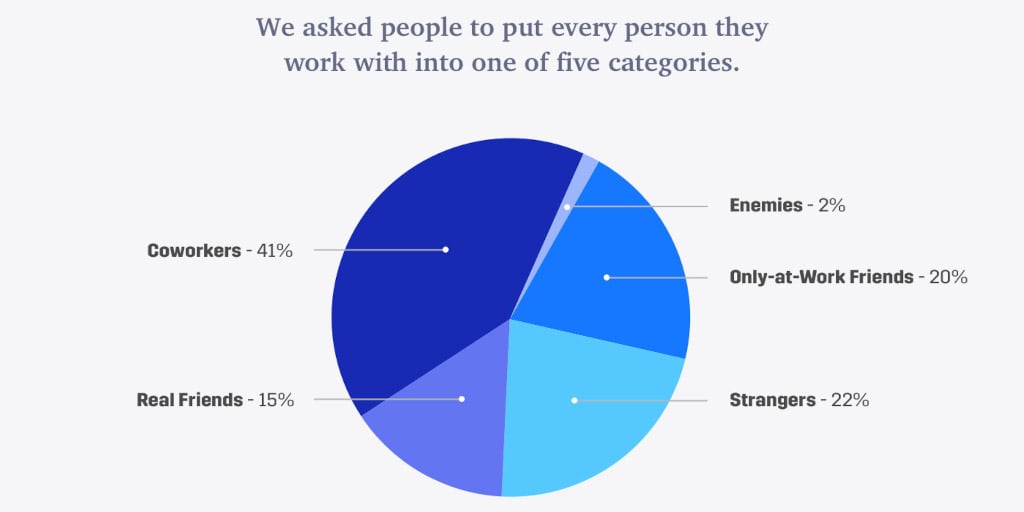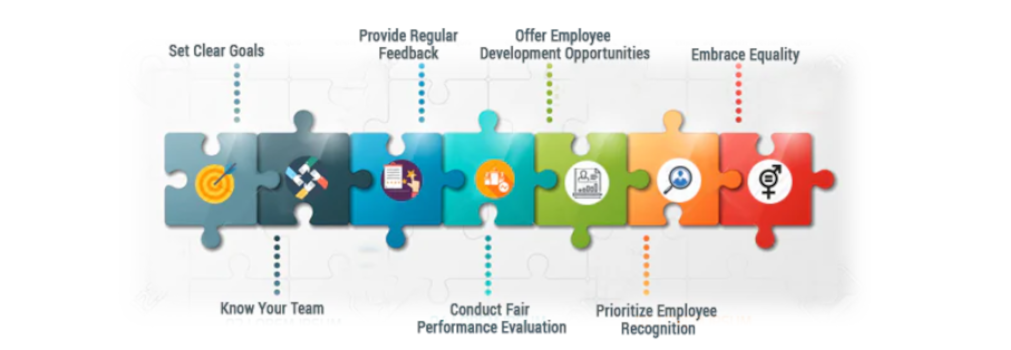 Jenna Bunnell is the Senior Manager for Content Marketing at Dialpad, an AI-incorporated cloud-hosted unified communications and call center IVR systems that provide valuable call details for business owners and sales representatives. She is driven and passionate about communicating a brand’s design sensibility and visualizing how content can be presented in creative and comprehensive ways. Find her on LinkedIn.
Jenna Bunnell is the Senior Manager for Content Marketing at Dialpad, an AI-incorporated cloud-hosted unified communications and call center IVR systems that provide valuable call details for business owners and sales representatives. She is driven and passionate about communicating a brand’s design sensibility and visualizing how content can be presented in creative and comprehensive ways. Find her on LinkedIn.
Personal user manuals are indispensable tools when it comes to working with new employees and perfecting your new employee onboarding process.
They are written guides that explain to others how best to work with you. They can either be targeted towards people working under you or people working with you.
Personal user manuals are full of information for other employees. They promote team collaboration by making others aware of your personal working style, and allowing them to work best with this.
They’re simple to write and maintain, and their purpose is to help you avoid giving multiple inductions to various new employees.
Having a written document is also useful as it’s information that your employees can come back to time and again—as opposed to a spoken induction when things can be easily forgotten.
If you’re working in a team that extends across multiple countries, there’s no need to plan multiple inductions to fit into everyone’s schedule. A personal user manual can be used instead, saving time, and allowing effective collaboration regardless of different time zones.
You may well be wondering: How on Earth do I get started with such an undertaking? Well, here are some steps you can take to create and maintain a solid personal user manual.
This post for Process Street will outline the 10 focus areas to include in your personal user manual:
- Choose a format for your personal user manual
- Personal user manual 101: Introduce yourself
- Outline your expectations of your team as a manager
- How to work with me: The essentials
- Scheduling: When are you accessible?
- What’s your working style?
- Troubleshooting your new manager
- Your user manual isn’t all about you
- Conflict resolution and you: Everything you need to know
- Personal user manual: The next iteration
- Check that your personal user manual works
Off we go!
Choose a format for your personal user manual
It’s likely that your document will need frequent updates to keep up with changes in business processes over time. So, consider an online service that keeps track of updates, like Google Docs. That way, you can easily add things in the future and won’t have to send around an update to employees each time.
Have a quick brainstorm about the things that you’d like to add. What would be essential to know if someone came into the office now? Would they need to know, for example, whether you use VoIP versus landline? Outlook versus Gmail?
Don’t forget that the main reason for creating a personal user manual is to allow new employees to feel more comfortable and to fit into your team better. It may seem like writing a personal user manual about how to work with you seems self-centered, but actually, it’s incredibly useful for your staff.

Personal user manual 101: Introduce yourself
The first thing you should say in the document is something to put any new employee at ease. Welcome them, and explain what a joy it is to have them working with you.
You should also include basic information about you, your career, and your life. Mention what you enjoy most at work, as well as what you enjoy most outside of work.
Overall, as a boss, you may be relaxed, strict, problem-solving, vision-based, or anything else. Try your best, in the introduction, to give an overview of your management style and the benefits of this style, as well as your organizational priorities.
Go into your background and your various skills, casting light on how you work in an office setting and what your ethos is.
Outline your expectations of your team as a manager
Although the employee will have already seen the job description, they will likely want to know more about the specifics. This includes information about your role and how the two roles will fit together.
What tasks do you expect them to do, and which should be left to you? How do they fit in with the other employees at the company? Where does their role feature in the grand scheme of the company, and the product/service pipeline? Are they more involved in app testing, ecommerce analysis, or customer service? Do these things ever overlap?
Teamwork makes the dream work, as they say. Ensuring that cooperation is possible from the start will allow for a seamless transition once you start working together. It will also leave your employee feeling empowered, as they will be clear on exactly what they should be doing, as well as being a great hack to save time, as there’s no chance of overlap and you both doing the same tasks unintentionally.

How to work with me: The essentials
You’re writing instructions to help a new employee hit the ground running, so they need to know what they’ll be doing all day. From the moment you enter the office, jot down what you do and when, and more importantly, how you do it.
What time do you usually get into the office? Note that down. Make notes about the various employees in the office, the structure of the office, your computer setup, where the toilets are. You might also like to note all of the computer programs you use — ecommerce analytics tools, administrative software, customer relationship programs, etc.
Put a notepad and pen in your pocket and continue for the whole day. Then, write a walkthrough of everything that your reader can expect.
You may also want to write down details about what the employee will be doing all day, perhaps even modeling this on some of your current workers and how you see this new role fitting in.
When are you accessible?
One of the main things that readers will want to know about is your work schedule. What do you do all day, anyway?
More specifically, what do you do when you start your day? What do you do for lunch? Whether all of your staff are in-house, working from home, or you manage a hybrid team, the employee will feel comfortable knowing the general routine of the workforce, and they’ll understand how they can fit in.
This may also include information about regular meetings, business trips, and even planned holidays throughout the year. Make sure there are no surprises for your staff, by being upfront about how the months will progress, and any pressing issues that you have coming up.
If you’ll be working on new projects throughout the year, or their role may change depending on various events, then definitely mention these. The manual is the perfect place to share details and news about what employees will be doing on a daily basis, and ensures there’s no room for confusion.
What’s your working style?
By asking yourself the following questions, you can get a better idea of what you could add to your personal user manual:
- What motivates me?
- How can employees succeed with me?
- What might employees not realize about me?
Usually, your colleagues are the ones who see you and witness your work every day, and as such, they will be able to provide unbiased feedback about you and the way you work.
They are likely to have better insight into what it’s like to be one of your employees and what future employees could be faced with when they join. If you have more than one employee doing the same job as the person/people to start, you can also ask them about the role.
However, make sure to ask the right colleagues in your research. Those whom you are close to may be more likely to be biased and/or lie to keep in your good graces. The below graph shows the results of a 2019 study showing that “real friends” typically make up only 15% of colleagues, meaning that it’s easier than you think to avoid those who may give you inaccurate feedback.
To further increase the likelihood of honest responses, you might consider sending around an anonymous online survey or creating a suggestion box. Ask colleagues what you think people should know about you as a boss and how to work in the office.

Troubleshooting your new manager
It’s time to admit what every manager should—as managers, and as humans, we are intrinsically flawed, and this can make it difficult to work with us.
There’s nothing wrong with admitting to your shortcomings and using this honesty to support your people as necessary. You have no doubt worked with someone in the past who you’ve respected but who has various flaws as a person that make them difficult to work with. So it shouldn’t come as a surprise that you will have quirks of your own that you’re probably unaware of.
Most managers know not to micromanage, not to pester, and not to have sky-high expectations, but when it comes down to not doing these things in practice, it can be a different story.
Considering these when writing your personal user manual will help you to write with empathy. The manual is also a great tool that will provide support to your future employees, as a resource that they can come back to for reference. Think about what issues may arise in light of some of these difficulties, including those highlighted by your employees.
Reflecting on past feedback from colleagues will help you to create a picture of your work personality. Inevitably, other personality types may conflict with this.
Your user manual isn’t all about you
The manager-employee relationship is a complicated one, and one that is inherently hierarchical. To make employees feel more comfortable, it’s vital to take responsibility for the health of the relationship. In general, employees cannot do much to change the dynamic of the relationship, due to the power imbalance that will always be there.
Before sitting down to write the document, get in the mindset of being able to manage the relationship in a healthy way. Just like when you work with the public and need to consider voice of customer approaches (i.e., the whole business is involved when it comes to being customer-centric), in this situation, you need to consider the voice of the employee, and make your employee central to the manual’s strategy.
You want to write your personal user manual in a friendly and humble way, rather than putting too much blame and responsibility on the recruit, a mistake often made by managers when writing manuals.
After all, the worker is there to be managed, not to read a manual and be quizzed on it. Rather than providing instructions in your manual, get into the mindset of being welcoming and giving helpful tips and advice.
The below image illustrates how the manager-employee relationship is made up of positive steps taken by the manager. 
Conflict resolution and you: Everything you need to know
Conflict resolution is very important in the workplace. You can nip any conflict in the bud by recognizing what could happen and explaining it in detail in the personal user manual.
This doesn’t mean predicting things before they happen, but it does mean clarifying that if the employee has any issues, or finds that you’re being a pain, then they should tell you, as you’re not always perfect!
The below graph shows how when an argument escalates quickly it’s often due to hostility, so prefacing any potential hostility can save a lot of headaches down the line.
Every workplace should have a conflict resolution process, including who to go to, how to report an issue, and what should be done to resolve it. You can easily make conflict resolution a part of the manual and introduce employees to the process before anything comes up, improving employee relationships and team collaboration.
Personal user manual: The next iteration
Keeping a personal user manual is a constant process, as the manual will require constant updates based on how you, your routine, and the business change. As you get to know the employee better, and they become part of the furniture, you may also consider asking them to help out by adding to the personal user manual as they see fit.
They may be able to add things that you haven’t considered before.
With a constantly updated document, current employees will also be able to go there for news and changes to processes, as well as reminders of the way things work.
You could even enlist one of your employees, who would like to, to act as a personal user manual update officer, constantly adding updates as they, their colleagues, and you think of them.
Check that your personal user manual works
It’s very important to make sure that your personal user manual is appropriate and appreciated by your staff.
Ask for feedback once your employees become familiar enough, making sure to collect data on whether the written guide helped them. You can ask the other, established employees in the office whether or not the introduction of the personal user manual helped them, how much, and in which ways.
Another good way to measure how well your manual is working is by assessing morale. Conduct surveys before and after the introduction of the manual, asking direct questions about how well they’re getting on at work and how positive they feel about their direction, and what they’re doing each day. If you notice a difference, that’s a sign that the manual has at least had a positive effect.
If you find that the introduction of the manual was disliked by your employees, or that it’s just doing nothing for time-saving or morale, there’s nothing wrong with retiring it. It can’t work for everyone.
When coming up with alternatives, you could brainstorm within the team, but you may also wish to consult a professional, such as an account executive.
However you choose to do it, implementing a personal user manual really could help supercharge team collaboration.
What’s your personal user manual look like? Let us know!







 Workflows
Workflows Forms
Forms Data Sets
Data Sets Pages
Pages Process AI
Process AI Automations
Automations Analytics
Analytics Apps
Apps Integrations
Integrations
 Property management
Property management
 Human resources
Human resources
 Customer management
Customer management
 Information technology
Information technology



Leks Drakos
Leks Drakos, Ph.D. is a rogue academic with a PhD from the University of Kent (Paris and Canterbury). Research interests include HR, DEIA, contemporary culture, post-apocalyptica, and monster studies. Twitter: @leksikality [he/him]